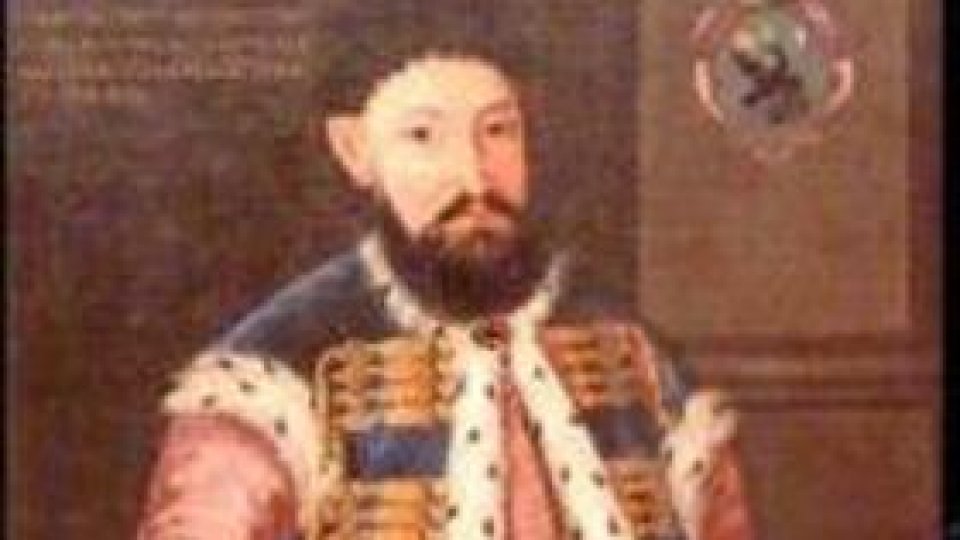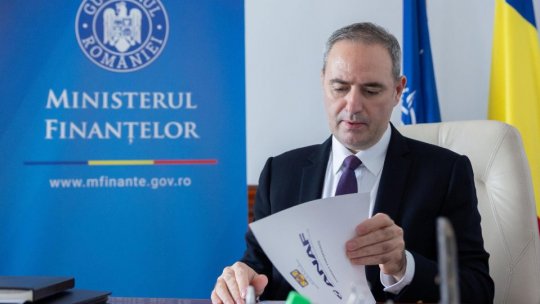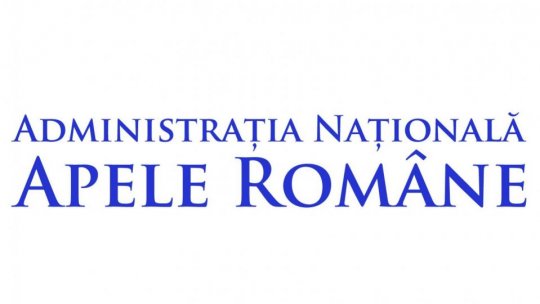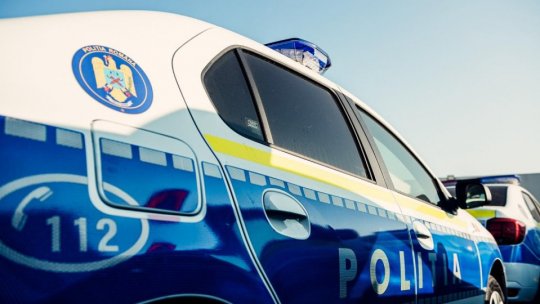Brâncoveanu - Missioner of Christ
During the 26 years of Brâncoveanu’s reign, Wallachia had been privileged with the most flourishing and prosperous period in its history.
Articol de Zenaida Luca-Hac, 12 Ianuarie 2012, 11:19
On 15 August 1714, the day of The Dormition of the Mother of God, Brâncoveanu and his four sons, Constantin, Ștefan, Radu and Matei, were beheaded in Istanbul.
The Romanian Orthodox Church has canonised them all as saints-martyrs and celebrates them on the 16th of August.
1. Who was Constantin Brâncoveanu?
Brâncoveanu came from two ruling families: the Wallachian one (his father) and the Byzantine Greek family (his mother).
He ruled Wallachia for over a quarter of a century and was on the verge of turning it into a great power. He was a demiurge, an artisan of peace and prosperity.
On his father’s side, the seneschal Matei Brâncoveanu, also called Papa from Brâncoveni, Brâncoveanu was also related to the house of Basarab I, the author of the Wallachian foundation.
He was related to Neagoe Basarab and Mihai Viteazul, and his grandfather, the high steward called Preda was the nephew of Matei Basarab.
On his mother’s side, Stanca Cantacuzino, he belonged to the royal house of Cantacuzinos from Constantinoples, who liked to say she descended from Basileus (the Byzantine Emperor) Ioan Cantacuzino VI (1341- 1354) who secluded himself in monastic life towards the end of his life.
He was brought up by two of his uncles in the Cantacuzino family: Șerban Vodă and the grand steward Constantinos (the chamberlain in charge with the festivities at the court).
They helped their sister, Stanca, to bring him up since he was one year old, after their father Papa had been killed during an insurgency in Bucharest (15 March, 1655).
Each of them offered him the best of what they owned. The steward Constantin, the family's scholar who had studied in Padova, gave him the famous Cantacuzino library (the largest library at the time).
Șerban Vodă always took him under his guidance and left in his care the princely school, the printing of the Bible in Romanian and the printing press, i.e. three important and powerful tools. Unfortunately, the same uncle Constantinos who paved Brâncoveanu’s way to the throne also hatched his perdition in Istanbul.
2. Brâncoveanu’s project
After he was raised to the throne of Wallachia by his uncles in 1688 following the sudden and unexpected death of their brother Şerban, they did not think that their nephew would take his lordship seriously, as a Wallachian lord, or better said as a Romanian, especially because he was hardly persuaded to actually accept the throne.
However, with the passing of some years, realizing that Brâncoveanu’s plan was to establish a new Wallachian dynasty of the Brâncoveanu family, they got frightened. They tried to turn him over to the Sultan and his allies, accusing him of divulging the interests of the Sublime Ottoman Court.
They did not succeed. Although the prince was called at Adrianoples to reckon for his actions, he returned safe and sound, but moreover reconfirmed to rule the throne. (He didn't find out who his traitors had been until the very last end when it was already too late, in 1714).
Worried as he was, he started to hurry things up after The “Adrianople event” .
He began to prepare his oldest sons to rule. He taught Ştefan, for example, the art of governing. He “asked” him to translate from Old Greek to Neo-Greek (the language spoken in their family), Plutarh’s “Parallel Lives" (an encyclopedia of famous political leaders in the Antiquity), where he could find enough patterns to follow.
He did his utmost to maintain peace in the country, in a time when all Moldavia and Wallachia’s neighbors were at war with the Turks.
He initiated the process of transforming his country into a true economic power.
He exploited silver and gold deposits unlike anyone else before him. He was called Altîn-Bey, Prince of Gold. His bags of gold coins were buying peace from the Turks and were supporting the Patriarchal Chairs in the Orient.
He built palaces, manors and monasteries. The most outstanding of them was the Palace of Mogosoaia, which was built in the architectural style known as "Brâncovenesc”, inspired from Renaissance architecture. It is well known that the palace is the par excellence residence of a king.
The most famous of monasteries is the Monastery of Hurezi, which later became the place where the family remains would be buried. Therefore, a royal necropolis.
He wished to return a subtle remark to Islam, which had already pervaded the Balkans.
He set the second capital city (for retreat or guard) at Târgovişte , an important commercial centre as the stem târg indicates (in Old Romanian, the Slavic word “târgovişte” meant a large market place).
He bought manors and built houses and monasteries in Transylvania (not only for retreat, as his traitors used to say, but so that the Romanian spirit and Orthodoxy would ray forth,). A good example is the Sâmbăta de Sus Grand Monastery.
He issued a powerful, namely heavy, gold coin which he was planning to offer to the guests at the wedding of his son, Radu, with the daughter of Antioh Cantemir, in 1714, when he was to enter his 60th year of his life.
He wanted to officially launch and accredit the coin when all the honorable guests from the South-Eastern Europe and Levantine world could be highly impressed (the Sultan Ahmed III had given his “blessings” for their wedding). He knew how important it is for a country to own a gold coin.
His heavy coin looked like this:
3. Brâncoveanu’s press and academy
Brâncoveanu inherited from his uncle Şerban Vodă a metropolis which was in the course of European development. A metropolis with a rudimentary University and a press house.
The Academy
In 1707, Brâncoveanu moved Şerban Cantacuzino’s “Slavonic School” to the Monastery St. Sava in Bucharest, a school which had become in 1646 „schola graeca et latina”, and made it a Royal Academy.
The courses were given in Greek: Aristotle, for example. There were also translation workshops on the discourses of the great Greek orators, like Demosthenes and Isocrates. Thucydides' texts (the Greek inventor of the school of political history) were translated and commented upon, as well as the texts of Plutarch, of the Greek tragedians Sophocles and Euripides, Pindar, Pythagoras, Plato and also Homer’s epic sories.
There were also lessons on astrology/astronomy, acoustics, (Pythagorean) mathematics, (Hippocratic) medicine and each seminar day was ended by translating and commenting a passage from the Gospel and from the Acts of the Apostles. Besides Ancient Greek (Hellenic) and Neo-Greek, the mother tongue of the professors, the Cantacuzino family and the intellectuals, they were also translating texts from Latin and Slavic.
Brâncoveanu’s academy superseded the once famous Patriarchal School in Constantinoples/ Istanbul, which had fallen into decay along with the town and the entire Byzantine civilisation.
In 1713, for example, the Royal Academy in Bucharest had over 200 spudei . Students who were given scholarships from the Sovereign and who, besides these, received meals and accommodation, books, comminations and also the possibility of seeing their own works or translations.
The Press House
There were in fact five press houses: one for each foundation built by the Brâncoveanu or Cantacuzino families, in Bucharest, Snagov, Târgovişte, Buzău and Râmnic.
The press house in Bucharest, the one which was installed in the Patriarchy Church, is famous for having printed the Bible, also called the Serban Cantacuzino Bible, because he had ordered its translation.
(Between 1687 and 1688, Brâncoveanu was named by his uncle Şerban Vodă custodian (head of the project) of the printing of the Bible).
This first complete Romanian translation of the Old and New Testament, accomplished by Radu Greceanu (Brâncoveanu’s official historian) and his brother Şerban, was highly requested by the minset prevalent in the churches in Muntenia in order to hold the liturgies in Romanian (and not in Slavic or Greek, as it been the case up till then) and to create the first generation of priests who could serve exclusively in Romanian.
It was a very important moment in the history of Romanian language and letters.
4. Constantin Brâncoveanu and his role model, Constantin the Great
In many of the book introductions which were printed in his press houses and on his expense, the sovereign Brâncoveanu was also called Constantin the Great.
Of course, it was natural that the first Christian Emperor and protector of Christianity, the founder of the Byzantine Empire, was a role model for the Wallachian prince, who was also a very generous protector of Orthdoxy.
This is proven by the beneficences towards the monasteries in Athos, the impoverished monasteries left without monks in Greece, Bulgaria and ex Yugoslavia, towards the communities and Patriarchies in Constantinople, Jerusalem, Damask and Alexandria- under-privileged Christian communities which the Ecumenical Patriarchate of Constantinople could no longer support.
He also helped St. Nicholas church from Galatasarayi in Constantinople, which was rebuilt after the fire in 1697, and offered support for the following monasteries: the Monastery of Panaghia (The Mother of Jesus) from Vlah Saray, also located in Constantinoples, and Monastery of Panaghia Sumela from Trapezunt, in 1694.
His positive attitude towards Christianity is also showed by the long visits the patriarchs of the Oriental Churches had in Wallachia, as honored guests of the Prince.
The Brâncoveanu beneficences used to be very generous, consisting of large amounts of money, food, books, manuscripts, clothes, religious containers or jewels, embroideries and other very precious canopies or vestments for churches.
He had donated to Christian communities in Syria books containing the liturgy and Holy Mass texts, as well as big books with prayers and psalm books translated to Arabic, even the press house installed in the Monastery of Snagov, in a time when books were extremely expensive and rare.
Brâncoveanu‘s printing press is very famous now because it remained the press with the most enduring activity in the Arabic world. It was initially used in Alep (1706-1711) and then near Beirut until 1899, printing a total number of 76 titles in different editions. It is known that, even during the time it was still working in Snagov, the press printed prayer and psalm books in Arabic.
The most grateful of all seems to have been St. Catherine’s Monastery in Sinai. In its receiving hall there is a canvas painting whose author remained unknown, depicting the 42 years-old Brâncoveanu (in the year 1699). There is the possibility that the painting was brought there by one of the last Sinai abbots of the St. Catherine worshiping churches in Wallachia, along with other jewels, sometime before the 1863 secularisation (V. Cândea).
The portrait itself is very self-explanatory: the Voivode appears wearing a red monk's cap while its crown "rests" at hand on the table. Inside the house of God he is no longer a prince but, God’s humble servant.
The crown is laid on a simple table (an Eucharistic symbol) meaning to show that the sovereign is laying down his worldly praise, on the table of Oblation, thus, the place where God's glory may be communed. 
5. Brâncoveanu’s martyrdom, recounted by Anton-Maria del Chiaro
Although it is said that his role model in life has been Constantin the Great, his model in death has been Christ himself. On the other hand, he was actually very preoccupied by “following God”. This is very well shown by the fact that he wanted the translation from Latin to Neo-Greek of the famous medieval writing, the one which alarmed the entire Western Europe, attributed to Thomas a Kempis, Imitatio Cristi.
The story of Brâncoveanu's martyrdom as well as his sons’(his descendants/successors), better said the story of the deracination of the entire Brâncoveanu family can be found in the Memoirs of his private secretary, the Florentine Anton-Maria del Chiaro, which had been published in Venice in 1718, under the title "Istoria delle Moderne Rivoluzioni della Valachia” (a work also known as "Wallachia's Revolutions”).
Del Chiaro worked in the royal chancellery for four years, until 1714, and he was, it seems, a very close friend of the Brâncoveanu family. It is possible he had been recruited by the "Secret Intelligence Service" from Venice in view of the fact that the Venice Mint (Zecca di Venezia) was keeping a very important part of the Brâncoveanu fortune. It is also possible that the Bank sent him “undercover”, in order to convince themselves of the financial power the Brâncoveanu family.
We owe him a debt of gratitude for the plausible description of the end of Brâncoveanu and his sons, a description which is worth reading, especially because we can find a touch of compassion and profound solidarity in his writing style.
You have below a slightly refined version of the text translated by S. Cris-Cristian (in Romanian) with slight amendments:
“The Grand Vizier (…) had taken all the necessary measures so that the one who was in charge with Brâncoveanu's deposition would arrive at Bucharest during the Holy Week, when all Christians are occupied with attending the Masses. Even though he tried to cloak it, a Greek friend of Brâncoveanu had found out about his plans, and here’s how: as one member of the sub-governor (kaymakam) from Constantinople had fallen sick, he was visited by a friend of his, a secretary of the Vizier. Talking about the latest news of the day, the secretary told the other sick person, among many other things, that the Vlah-Bey (Prince of Wallachia) had been declared a rebel and that he would shortly be brought together with his family to Constantinople, while his great fortune would be stored up in the Sultan's exchequer.
The doctor pretended not to take notice of the discussion between the Turks, while preparing a medicine for the sick. When going out of the room, he met one of his friends, also a Greek, to whom he told all he had heard inside and whom he conjured not to mention his name.
The Greek hurried to write to Brâncoveanu informing him about the secret plans that were being hatched, so that he could take all the necessary measures in such a critical situation.
The prince had read the letter before some of his ministers and asked for their opinion, if he should understand it literally or not. Some of them had answered: "Your highness, the Easter is near. Lacking enough money for the holidays, the Greek made this up this specious allegation in order to extort some from you.”
Hearing all this, the prince had thrown away the letter and said: the hell with it and with this croaker! If all he could think of is this pretext, he won't get any money!”
Not receiving the confirmation from his agents in Constantinople, the Sovereign had many reasons not to believe the canard. The Greek wrote again to the Sovereign, but it was in vain.
During these pendulous days, Lady Stanca, the oldest daughter of the Voivode, had fallen ill. She had called for her mother and her sisters, showing them in hallucination a band of Turks who were grabbing his father by the neck in a choking manner, taking him to Constantinople. Hardly had she been calmed down afterwards that she died a few hours later. I have been told this by Stanca's sisters, before their father's dethronement.
It was a Tuesday, the Tuesday of the Holy Week, 4th of April 1714..when the Kapucu Mustafa-aga had arrived in Bucharest. He was one of Brâncoveanu’s oldest friends, carefully chosen by the Grand Vizier so that his arrival would not frighten him. The sovereign sent officers, as the custom was at that time, to salute him and make sure he had everything he needed, asking him if he wanted to be immediately admitted to the Presence at Court. The Turk said with great delicacy that he had no urgent business and that he was in his way to Hotin. Being very tired and because the day was just about to end, he wished to see the Sovereign the following morning.
On Wednesday, the following day, the usual suite escorted the Kapucu to the Court where Brâncoveanu was waiting for him, in the large audience room. When he arrived, the Sovereign stood up, greeted him in the middle of the room and invited him to sit down. Instead, the Turk said there was no time and that he regretted he had to bring such a bad news, but that he should be patient and obey the Divine Will, and also submit to the Sultan's orders; and taking a silk black wimple out of his pocket, he put it on the Prince's shoulder and said "mazil", which means "dethronement".
The poor Sovereign was surprised and wanted to sit down on his throne, but the Turk had pushed him aside, telling him that his place was no longer there.
All his main boyars and the Great Bishop were called immediately and they were read the ferman, which said that Brâncoveanu and his entire family had been declared shaitans (fiends), or rebels, and that he was being dethroned.
I have seen with my own eyes that six of the servants were blocking the entrance, not letting anyone in to talk with poor Brâncoveanu, and they didn’t leave the door until he was in the boyars’ keeping, boyars who were under the Sultan's strict orders. They had signed and sealed declarations which said that they were responsible of Brâncoveanu's escape, with the price of their fortune and life. These being said and done, the kapucu went to seal the treasury and then the Prince's own exchequer, namely his storehouse.
The poor Sovereign went back to his chambers in great sorrow and dreary thoughts: doubt, jealousy, fear and hope. He remembered the letter from his friend in Constantinople and repented for not having believed him.
The following day, the Good Friday, around 9 o’clock in the evening, Sovereign Brâncoveanu and his four sons were escorted to Constantinople towards a remorseless death. He couldn’t postpone the departure until after the holidays. His enemies had warned the Sultan’s emissary that such a delay would be wrong due to the arrival of the Germans, who could free the Sovereign. Sovereign Stefan accompanied him to the carriage bareheaded. While on the stairs in the Court, Brâncoveanu said to him: Godfather Stefan, if all this misfortune has come from God because of my sins, let His will be done. If this is done, however, out of human malice, for my doom, God forgive my enemies, but they should be aware of the frightful and vengeful divine judgment.
After almost three weeks of traveling, Brâncoveanu and his entire family arrived in Constantinople, but he wasn’t taken to one of his palaces as he would have hoped to, but directly to a dark place in Yedi Kule prison ("Seven Towers”), while the Lady, the daughter-in-law with her son and daughter were taken to a higher and brighter place.
In Bucharest, the Sultan’s emissary opened Brâncoveanu’s private treasury which had been previously sealed, and made the inventory: money, precious jewels, splendid clothes, most of which were coated with mole fur, and other valuable furs brought from Moscow. The tableware, furniture and all belongings were auctioned by the Turks under the eyes of the Princesses who remained at court, while the new ruler severely forbid giving any help to the members of the family of the dethroned, even the aid of medical staff in case of serious diseases.
Even in these hard moments, the isolated princesses had found some help in doctor Gheorghe Trapezundul, a former scholar of Brâncoveanu’s, who had supported him to finish his medical studies in Padova. He risked his life and showed gratitude towards the family of his benefactor, and he was given the mission of leaving to Vienna and Venice upon the return of the Lady, becoming her private business assistant.
By the end of his mission, the Turk returned to Constantinople, bringing along the confiscated riches which amazed the Sultan and enticed him even to possess them.
After stately listening to the accusations, the Sultan’s missionary communicated them to Brâncoveanu and put him and his son to great torture, in order to find out more about their fortunes. Five days later, on 26th August, the Dormition of the Mother of God, after they had confessed all there was to confess, before the Sultan who was keeping the distance the missionary continued the interrogatory whose questions Brâncoveanu answered without fear. By the end of it, he made a sign and the executioner came into view.
When Brâncoveanu saw that he was approaching holding a sword in his hand, he said a short prayer and addressed his sons: My sons, be courageous, we have lost everything we had in this world. The least we can do is to save our souls and wash our sins with our blood.
The first to be executed was Văcărescu (the Sovereign’s councilor), then the youngest prince, Mateiaş and the third son, Răducanu (the one who was supposed to marry the daughter of Antioh Cantemir, with the Vizier’s approval). Afterwards Ştefăniţă and Constantin, the oldest son, were also beheaded. The last one, the misfortuned Voivode, who was their father, had to witness the whole scene of cruelty and coarseness, ,.
After this very tragic event, the Sultan went away and the heads were carried around the town, on pikes. Many people had gathered around the bodies but the Great Vizier who feared that a revolt would arise, as the Turks themselves were terrified by so much injustice, ordered that the bodies should be thrown in the sea. However, they were rescued in secret, by some Christians, and buried in a monastery called Halki, not far from Constantinople.
The relics had been stealthily brought in the country and buried in St. George the New church, built by Brâncoveanu in Bucharest. Only in 1932 were they discovered and given a proper inhumation in 1934.
What had become of the traitors? “... his two uncles, Constantin and Mihai, brothers of Stefan Cantacuzino, were hanged in 1716, one in Constantinople and the other in Adrianople.../ Del Chiaro.
The Fanariots (from Fanar, Constantinople), who were sent by the Sublime Porte in Muntenia after the tragic and sudden disruption of Brâncoveanu’s "Wallachian project", did not continue his work at all, but on the contrary. This was because they didn't consider themselves and weren't Sovereigns, but simple landholders of a great and prosperous estate.
Works Consulted:
N. Iorga Institute of History (1989) Constantin Brâncoveanu (collective work), Bucharest, R.S.R Academy Publishing House.
Teodorescu, R. (1992) Civilizaţia românilor între medieval şi modern (vol. II), Bucharest, Meridiane Publishing House.
Del Chiaro, Anton-Maria (1929) Revoluţiile Valahiei. Translated from the Italian, by S. Cris-Cristian, Iaşi, Viaţa Românească.
Translated by: Angelica Țăpoca and Raluca Petre
MA Students, MTTLC, Bucharest University














